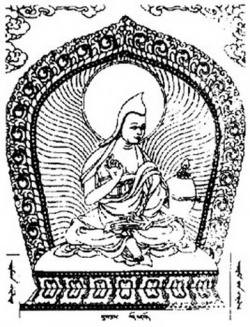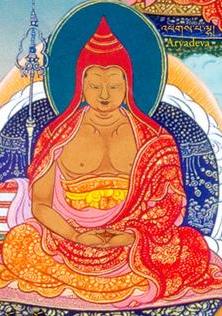Gunaprabha
Gunaprabha
徳光 (n.d.) (Skt; Jpn Tokuko)
A seventh century Indian scholar and disciple of Vasubandhu, Gunaprabha is best known for the root text Vinayasutra. He is usually thought to be one of the Two Supreme Ones.
Gunaprabha (Skt. Guṇaprabha; Tib. ཡོན་ཏན་འོད་, Yönten Ö; Wyl. yon tan 'od) — an Indian master of the Vinaya tradition born in the seventh century and a Disciple of Vasubandhu. According to one tradition, he is considered as one of the ‘Two Supreme Ones’—great commentators on The Buddha’s teachings. Gunaprabha: One of the "six jewels of India" and foremost student of Vasubandhu. Known for his work on the precepts, the Vinyasutra.
A Monk and scholar of India. His story appears in The Record of the Western Regions —Hsüan-tsang's account of his travels through Central Asia and India in the seventh century in which he wrote about the Religion, customs, folklore, etc., of the areas he visited. Gunaprabha was said to have first studied the Mahayana teachings but converted to the Hinayana after reading a Hinayana treatise, and wrote scores of treatises in which he criticized the Mahayana teachings.
He was believed to have ascended to the Tushita Heaven to resolve his remaining doubts concerning the differences between the Hinayana and the Mahayana; there he met Bodhisattva Maitreya, but did not respect or learn from him because Maitreya was not an ordained Monk.
Source
Gunaprabha (Skt. Guṇaprabha; Tib. ཡོན་ཏན་འོད་, Yönten Ö; Wyl. yon tan 'od) — an Indian master of the Vinaya tradition born in the seventh century and a disciple of Vasubandhu. According to one tradition, he is considered as one of the ‘Two Supreme Ones’—great commentators on the Buddha’s teachings.
Writings
Further Reading
- Paul K. Nietupski, 'Guṇaprabha’s Vinayasūtra Corpus: Texts and Contexts', JIATS 5, 2009 (Available online here)

